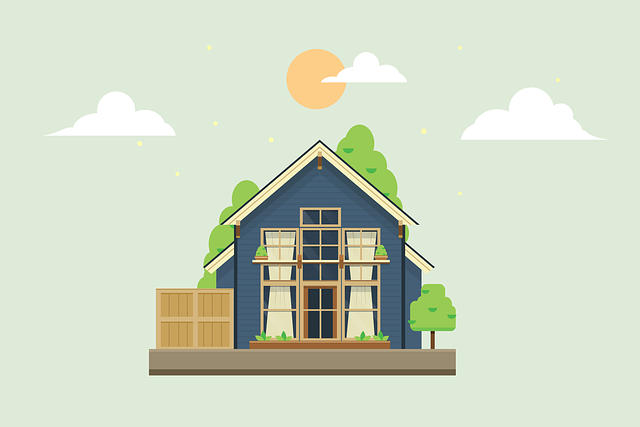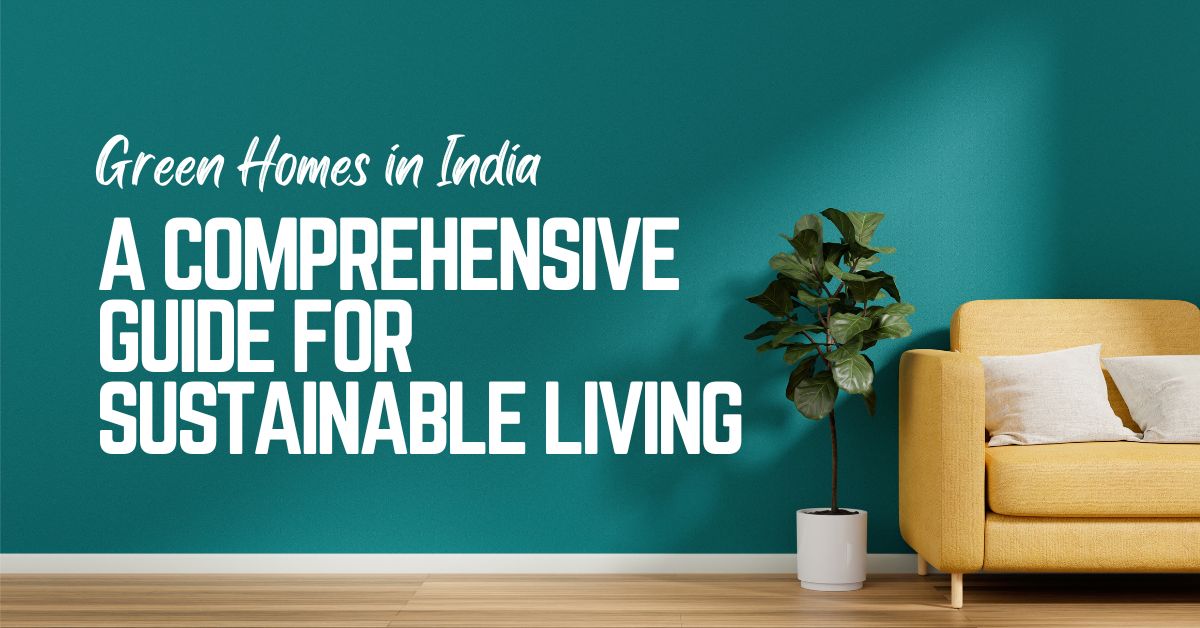In recent years, the concept of green homes has gained significant momentum in India as more people are becoming conscious of their environmental impact. Green homes not only contribute to a healthier planet but also offer a sustainable and cost-effective living solution. In this comprehensive guide, we will explore the key aspects of green homes in India, highlighting their benefits, challenges, and the growing trend towards eco-friendly living.
Section 1: Understanding Green Homes
1.1 What are Green Homes? Green homes, also known as eco-friendly or sustainable homes, are designed to minimize their impact on the environment. These homes incorporate various technologies and practices to reduce energy consumption, water usage, and overall carbon footprint. From energy-efficient appliances to sustainable construction materials, every aspect is carefully considered to create an environmentally responsible living space.
1.2 Key Features of Green Homes
- Energy-efficient lighting and appliances
- Proper insulation for temperature regulation
- Rainwater harvesting systems
- Use of renewable energy sources like solar panels
- Sustainable construction materials such as bamboo and recycled steel
1.3 Sustainable Architecture Green homes often employ sustainable architecture, which focuses on creating structures that harmonize with the natural environment. Features like passive solar design, where homes are oriented to maximize sunlight for heating, showcase the integration of sustainable architecture in green homes.
Section 2: Benefits of Green Homes

2.1 Environmental Impact One of the primary advantages of green homes is their positive impact on the environment. By adopting eco-friendly practices, residents contribute to reducing carbon emissions and conserving valuable resources. The use of renewable energy sources, such as solar power, not only reduces dependency on conventional energy but also decreases the overall carbon footprint of the household.
2.2 Cost Savings While the initial investment in green technology may seem higher, the long-term cost savings are substantial. Energy-efficient appliances and renewable energy sources lead to lower utility bills, making green homes financially attractive in the long run. Additionally, the integration of sustainable materials may result in reduced maintenance costs, as these materials often have a longer lifespan and are more durable than traditional counterparts.
2.3 Health Benefits Green homes promote a healthier living environment. The use of non-toxic materials and improved ventilation systems ensures better indoor air quality, reducing the risk of respiratory issues and allergies. The emphasis on natural light in green homes not only enhances the aesthetic appeal but also positively influences the mental well-being of the occupants.
Section 3: Challenges and Solutions
3.1 Initial Costs One of the main challenges in adopting green home practices is the perceived high initial costs. However, various government incentives and subsidies are available to encourage individuals to invest in sustainable living. Financial institutions are also increasingly offering green home loans with favorable terms, making it easier for homeowners to fund eco-friendly upgrades.
3.2 Awareness and Education Lack of awareness about green home practices is another hurdle. Education and outreach programs can play a crucial role in enlightening people about the benefits of sustainable living and how they can make a difference. Government and non-government organizations can collaborate to organize workshops, seminars, and awareness campaigns to educate the public about the long-term advantages of green homes.
3.3 Certification and Standards The absence of standardized regulations for green construction can be a challenge. However, the introduction of certification systems such as LEED (Leadership in Energy and Environmental Design) and IGBC (Indian Green Building Council) has helped in setting benchmarks for green building practices. These certifications not only guide developers in constructing eco-friendly buildings but also aid consumers in making informed choices.
Section 4: The Growing Trend of Green Homes in India
4.1 Government Initiatives Recognizing the importance of sustainable living, the Indian government has introduced several initiatives to promote green homes. This includes tax incentives, subsidies, and certifications for eco-friendly constructions. The Pradhan Mantri Awas Yojana (PMAY) scheme, for instance, encourages the construction of affordable housing with a focus on sustainable and environmentally friendly practices.
4.2 Changing Consumer Preferences With increasing environmental awareness, homebuyers in India are actively seeking properties that align with their eco-friendly values. Real estate developers are responding to this demand by incorporating green features into their projects. From energy-efficient lighting to water recycling systems, modern developments are integrating sustainable practices to attract environmentally conscious buyers.
4.3 Green Communities The concept of green communities is gaining popularity, where entire residential complexes are designed with sustainability in mind. These communities often include communal green spaces, waste management systems, and shared renewable energy resources. Green community living fosters a sense of environmental responsibility among residents and creates a collective impact on reducing the overall ecological footprint.
Section 5: DIY Green Home Practices
5.1 Energy-Efficient Appliances Homeowners can start their green journey by replacing conventional appliances with energy-efficient ones. LED lighting, energy-star rated appliances, and smart home technologies contribute to reduced energy consumption and lower utility bills.
5.2 Water Conservation Implementing water-saving practices is crucial for sustainable living. Rainwater harvesting systems, low-flow fixtures, and efficient irrigation methods can significantly reduce water usage in and around the home.
5.3 Sustainable Landscaping The choice of plants and landscaping practices can impact the environment. Opting for native, drought-resistant plants and employing organic gardening techniques contribute to a more sustainable and eco-friendly outdoor space.
Section 7: Case Studies of Green Homes in India
7.1 Sustainable Housing Projects Numerous real estate developers in India are spearheading the green homes movement by incorporating sustainable features into their projects. Case studies of successful sustainable housing projects can provide valuable insights into the feasibility and benefits of green construction. For example, the Mahindra Lifespaces’ Sustainova project in Chennai showcases the integration of solar power, rainwater harvesting, and energy-efficient designs, setting a benchmark for eco-friendly urban living.
7.2 Green Retrofits In addition to new constructions, the retrofitting of existing homes with green technologies is gaining traction. Case studies illustrating the transformation of conventional homes into energy-efficient and environmentally conscious spaces can inspire homeowners to consider green upgrades. The retrofitting of a traditional Indian home with solar panels, insulation, and smart energy management systems, resulting in reduced energy consumption and a smaller carbon footprint, is a noteworthy example.
Section 8: Future Trends in Green Home Construction
8.1 Advancements in Technology The future of green homes in India holds promise with continuous advancements in technology. Innovations in building materials, energy storage, and smart home systems are anticipated to further enhance the sustainability of residential structures. For instance, the integration of artificial intelligence for optimizing energy usage and the development of more efficient solar panels are poised to redefine the landscape of green home technology.
8.2 Circular Economy Practices As awareness grows regarding the impact of construction materials on the environment, there is a shift towards adopting circular economy practices in green home construction. This involves using recycled or repurposed materials, thereby reducing waste and promoting a sustainable lifecycle for building components. Future green homes may increasingly embrace circular economy principles, contributing to a more sustainable and responsible construction industry.
Section 9: Challenges on the Horizon
9.1 Scalability While green homes are gaining popularity, scalability remains a challenge. The construction industry’s widespread adoption of green practices requires significant investments, changes in traditional building methods, and widespread acceptance from both developers and consumers. Overcoming this challenge necessitates a collaborative effort from the government, private sector, and communities to create a conducive environment for the growth of sustainable housing.
9.2 Policy and Regulation Despite government initiatives, the absence of stringent regulations for enforcing green building standards poses a hurdle. Future developments in the green homes sector would benefit from more comprehensive and enforceable policies, ensuring that eco-friendly practices become a norm rather than an exception in the construction industry.
Section 10: Conclusion
In conclusion, the journey towards widespread adoption of green homes in India is multifaceted, encompassing technological advancements, policy changes, and shifts in consumer behavior. As the benefits of sustainable living become increasingly apparent, it is crucial for all stakeholders – government, developers, and individuals – to collaborate in steering India towards a greener and more sustainable future.
By embracing green homes, we not only contribute to a healthier environment but also create a legacy of responsible living for future generations. The evolving landscape of green construction in India offers a wealth of opportunities for those seeking to make a positive impact on the planet while enjoying the numerous benefits of sustainable and eco-friendly living.
Remember, the journey towards a greener India is ongoing, and each small step, whether it be a change in personal habits or the construction of a green home, contributes to the larger movement for a sustainable and resilient future. Choose green, live green, and be a part of the transformative journey towards a more eco-conscious society.
